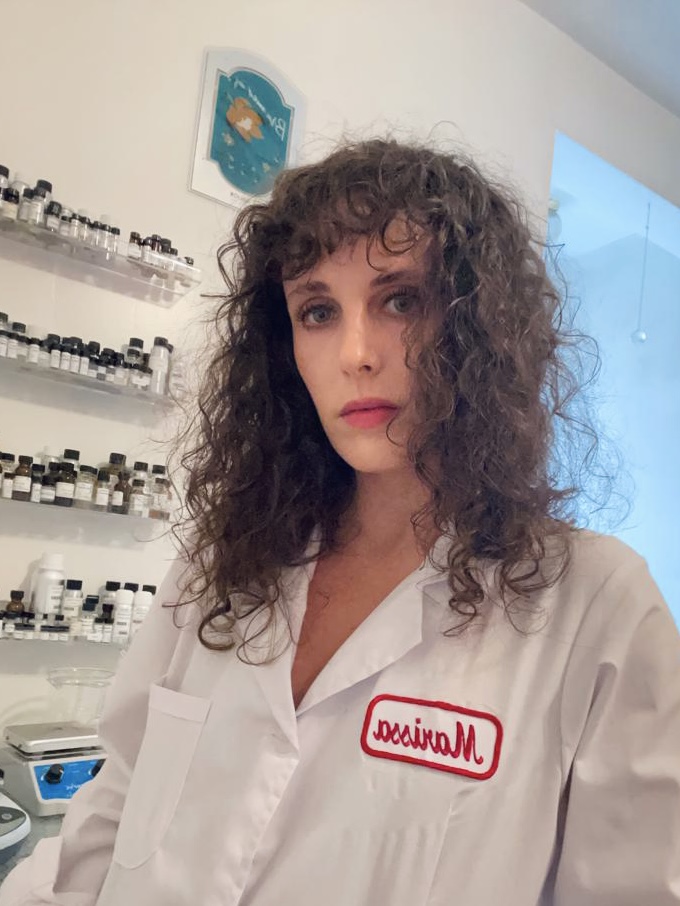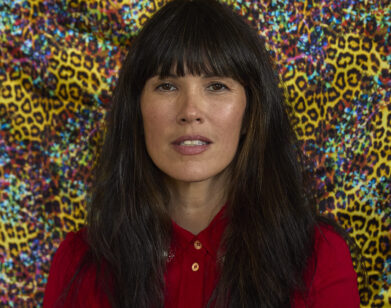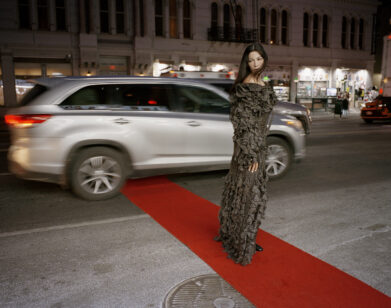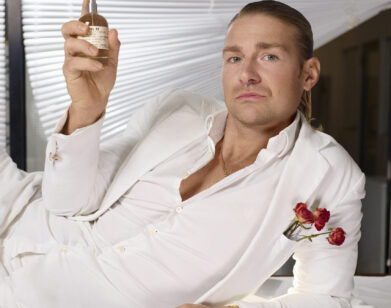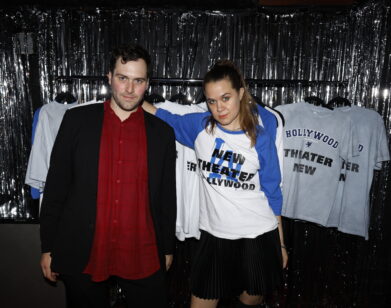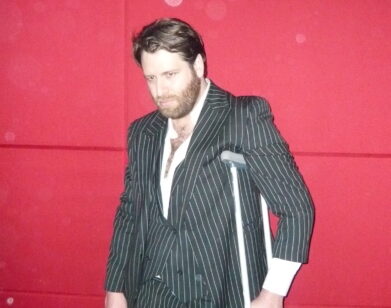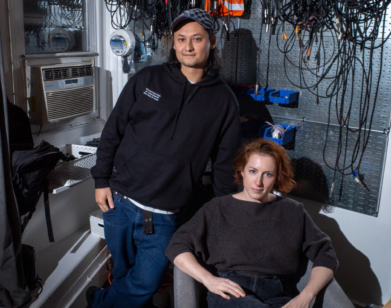SNIFF
Marissa Zappas and Andreas Keller Talk Olfactory Art and Perverted Scents
We’re currently in the midst of a reinvention of scent. What was once the most neglected of the five senses is gaining attention in a fragrant craze, from viral PerfumeToks to higher-brow artistic takes at galleries like Olfactory Art Keller, the smell showroom curated by Andreas Keller that invites visitors to play an Odor Organ and feed smelly objects to a GPT-4 powered smell predictor in a compact space on Henry Street. When Keller joined cult perfumer and scent artist Marissa Zappas—whose most recent release, Maggie the Cat is Alive, I’m Alive, a glamorous, humid Liz Taylor-inspired fragrance that got its flowers from all of downtown’s hottest tastemakers—the pair dove right into olfactory artspeak, formulating the smell of grandma’s house, and the duty-free perfume shopping experience.
———
MARISSA ZAPPAS: I think it’s so funny how we’ve known each other all these years and haven’t worked together.
ANDREAS KELLER: And we’re going to change that soon hopefully. How long have you been working with scent?
ZAPPAS: Since 2015. What about you?
KELLER: My background is in academia so I’ve been studying how smell works for almost 20 years, but only since I opened the gallery two-and-a-half years ago did I become more involved in the community of creators that are working with scent.
ZAPPAS: Do you feel like you’re expanding sensory definitions of art?
KELLER: Like many people who are interested in smell, I look down on seeing as a cheap, quick way of perceiving the world. Smell is something that is much more involved. There’s a reason they say you should stop and smell the flowers. It takes effort and it’s difficult to talk about. People don’t have the language for it. So I want the art to use smell to draw people in and appeal to their emotions, which is what you are doing with your perfumery work too.
ZAPPAS: I once read that vision is meant to divide and discriminate, while smell is meant to confuse, which I always appreciated. And so many of us have trouble living in a state of confusion.
KELLER: That’s interesting. Smell does confuse. In the gallery, every once in a while there’s a group of people who disagree about how something smells and there’s no way of resolving that.
ZAPPAS: Some visual art really lends itself to an olfactory component like Portia Munson’s, who I worked with, because it’s playful and textural already. But adding scent to visually sparser places like hotels works too, because the entire point is to highlight the blankness or austerity. So sometimes I wonder whether a visual component, even if it’s just some words describing what the smell is, is absolutely necessary. But to me, it seems like it is. Visually, I’ve always been really inspired by early 20th-century perfume like Guerlain and Schiaparelli, who had such striking bottles and collaborated with Dalí. Guerlain had the most beautiful narratives for their fragrances, and that’s something I’m trying to bring back. Perfume used to be much more culturally relevant, but over time perfume advertising just became basic imagery of people riding horses naked. But I want to have fun telling a story.
KELLER: In a gallery, you can play around with all those dimensions and it’s interesting to see how people respond differently when they’re confronted with smells in different ways. We do experimental perfumery, we do multi-sensory art with wax sculptures or scented paintings like a scratch and sniff, or hand sanitizers, and so on. And sometimes we do immersive experiences, where the smell just fills the gallery. And you’re right that there is a strong need for the visitors to identify a smell because there is no culture of appreciating smell. If people go into a gallery with abstract paintings, they’re not going to stand around like, “Is it a car or a house or a person?”
ZAPPAS: There’s a compulsion to know what it is.
KELLER: Because some of those smells are abstract, they’re not meant to be anything. And I don’t make the artists tell me what’s in there either. And then once people get over that, there’s the dimension of pleasantness. I like this smell, but I don’t like that one. Which again, you wouldn’t do with colors in a painting. There’s an engagement beyond assigning value, but letting it affect you emotionally, letting it trigger associations. But the sterility of the gallery is a problem.
ZAPPAS: I think it only adds to the disorientation of the entire experience of smelling. As a perfumer, I’m also interested in the idea of smell as art, but for me, perfume is definitely art that doesn’t have to exist in a gallery to be considered as such. How perfume merges directly with the body and becomes this invisible article is actually, to me, the most compelling thing about it. You could ask the same question about fashion. Like Andy Warhol said, “Fashion is more art than art is,” and I agree.
KELLER: People have spent their entire careers trying to define art and nobody ever came up with anything that seemed satisfying. So I don’t think there’s a dividing line between an artist and a perfumer. Perfume has to comply with certain safety standards and it has to be stable for more than a day to be useful. So it limits what you can do creatively.
ZAPPAS: For some people there actually is a line, though. One olfactory art exists in a gallery space and one might exist on the counter at Macy’s, so in their minds one is art and one is not. That’s why I felt a little bit of resistance showing olfactive art in gallery spaces, because it takes something so personal and moves it into a more sterile space. I often feel like in gallery spaces people wonder if what they’re smelling is correct and don’t feel at ease enough to play. I like experiencing smells in places where the mind can really absorb them. My goal has always been to stock my perfumes in duty-free because, to me, that’s the ultimate place to smell and shop for perfume. You’re killing time alone and your brain is just totally open and zoned out.
KELLER: You’re just exploring by yourself with very low stakes and an open mind. I feel that myself when I go to galleries. If it’s some conceptual, challenging exhibition, you’re always worried about embarrassing yourself by thinking that something that isn’t part of the art is actually art or the other way around.
ZAPPAS: I think part of the disorientation around the experience of smell is the lack of language we have around it. My friend, Courtney Rafuse [of Universal Flowering], who’s another independent perfumer, says she always appreciates when people describe smells without necessarily trying to get them right. It’s so much more interesting to say something smells like burnt car tires or Flintstones vitamins than just leathery or fruity. In 2014, if somebody had handed me a blotter blind, I might’ve said something really crazy, but now I’m guilty of smelling things and saying green or herbal because I’ve worked so much within the limitations of olfactive language. Prior to learning olfactive language, I was using it in a much more creative way. Not to say that I can’t get back there, but regurgitating this language to clients to make myself sound more professional does ultimately work against my experience of smell. It’s one of those questions of what happens when you turn your passion into your work.
KELLER: Yeah. And the smell language is made up to facilitate communication amongst smell professionals. So oceanic smells don’t really smell like the ocean.
ZAPPAS: You can list notes in perfume that are really far-fetched. Most commercial perfumes have notes listed that feel like a stretch to me.
KELLER: It is a skill. I had one visitor—I wish I would’ve taken her email address—who was a genius at describing the smell experience. For one smell, she said it smells like electricity is flowing through your teeth. And it’s good to describe the feeling created by that smell without listing ingredients or comparing it to other better-known smells.
ZAPPAS: Wow. I think this is why they say the best writers have the capacity to write about scent.
KELLER: But many of those descriptions are not shared. If I say something smells like my grandmother’s house, it’s me reporting my personalized response.
ZAPPAS: I think grandmother’s houses are—
KELLER: Smell the same everywhere.
ZAPPAS: I actually just made a personalized perfume for a client inspired by her grandmother’s home, so I did a deep dive on that. Older homes that have accumulated dust and life tend to smell like indole. Pure indole smells like dust balls to me. And there are usually some floral smells coming from cleaning products or old potpourri, or fragrance. So rose or lavender and a sharp lemon note. And cedarwood for wooden furniture. Do you have any interest in the history of commercial perfume?
KELLER: I’m willfully ignorant about it. Is there a strong framework within which you situate your own work?
ZAPPAS: That’s an interesting question because I think of perfume as a matriarchal object that’s passed down through generations. I’ve always been very drawn to the work of Olivia Giacobetti. My first smell memory was figs and fig trees, and she makes the most gorgeous fig perfumes. And also Sophia Grojsman—the first perfume I ever learned to recreate was Paris by YSL. And of course Olivier Gillotin, who’s my mentor. I studied his formulas as I was compounding them for him in the lab, so I structure my formulas similarly to his. But as far as lineages go, it’s hard to connect myself to commercial perfumers because I’m trying to carve out a different path.
KELLER: Yeah. I’m also trying to have a punk rock attitude that doesn’t value skill and experience as much. In the last show, somebody combined three different olive oils into a smell. Somebody used soy sauce to create the smell of the dumpling shop that’s next to the gallery. And that’s not something a perfumer would do because everything they do has to be worn on the skin. If you look at contemporary art, you can also tell who went to art school and who just has a very strong desire to create.
ZAPPAS: Totally. One thing I love to do is to take a concept that’s already been done and pervert it. I’m working on a perfume inspired by the legends of Old Hollywood for my friend, the brilliant actress, Ruby McCollister, for her show Tragedy. So naturally, our starting point was Fracas. There’s nothing more iconic than Fracas, but how do I make a version that’s kinkier?
RAJAGOPAL: Speaking of personal scents, what would you say is the key to choosing a fragrance for oneself?
ZAPPAS: I have a spiritual perspective on how one selects a scent. It’s almost like adopting a cat. The scent chooses you. I try to give vivid descriptions on my website so people can feel inspired by a word or an image. But for me, the most important part of finding a perfume is that it has to inspire a future self. Twitter and TikTok are also circulating more conversations about perfume in a way that hasn’t happened before. A lot of people haven’t been given the blessing to take it seriously or the means to have conversations with other people about it, and it’s really cool that now these conversations are happening.

